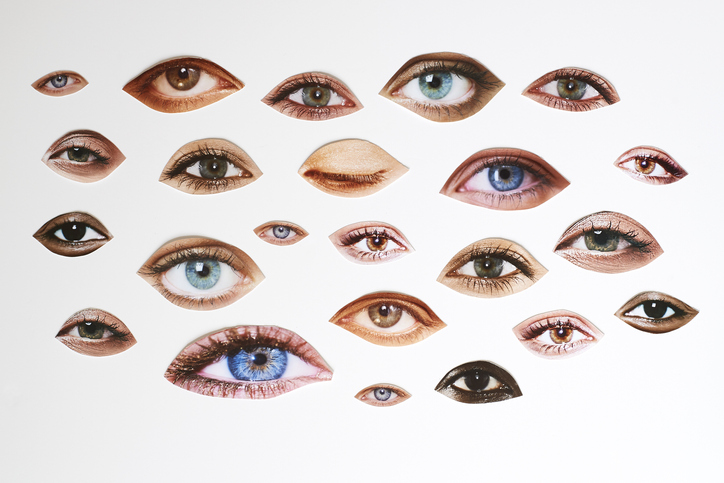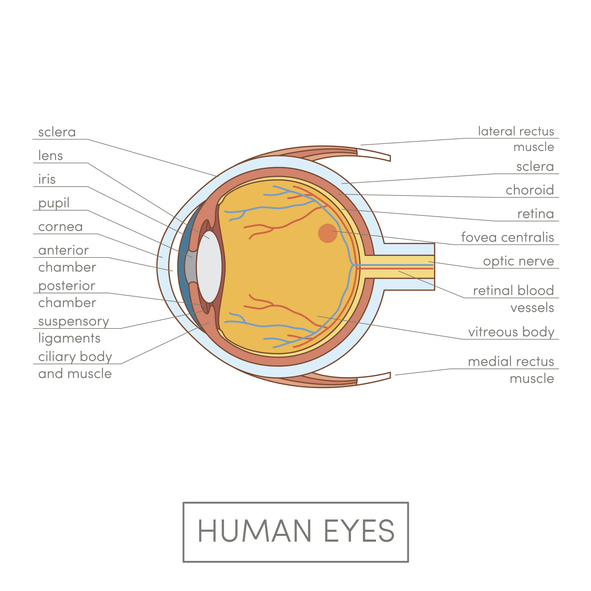I Experienced My First Eye Floater. Here’s What You Need To Know.

By Joy Stephenson-Laws, J.D., Founder
Recently, I saw a cobweb type circle in my right eye. I had never experienced this before, so I did what most people do when they have an unfamiliar ailment. I “Googled” it.
“Dr. Google” (which, by the way, should never serve as your main healthcare provider) said that it was likely an eye floater, and when I went to my actual eye doctor and underwent an x-ray it was confirmed that I did indeed have an eye floater.
What are eye floaters?
First, it is important to understand a few basics regarding the anatomy of the eye. There are several parts to our eyes, but to keep it simple let’s focus on the front of the eye and the back of the eye.

Consists of the cornea. Think of the cornea as the clear window to the front of your eye that focuses light. Behind the cornea lives what is called the anterior chamber. This is a fluid-filled space, and the fluid is called aqueous humor. Our eyes are always making this fluid so that the eye can stay nourished and inflated. And although you don’t notice it, aqueous humor drains from the eye in what is called the drainage angle in order to maintain eye pressure.
Behind the anterior chamber lives the iris (colored part of our eye), the pupil (that dark hole in the middle) and then directly behind the pupil is the lens.
“By helping to focus light as it enters the eye, the cornea and the lens both play important roles in giving us clear vision. In fact, 70% of the eye's focusing power comes from the cornea and 30% from the lens,” according to the American Academy of Ophthalmology.
The back of the eye:This area of the eye includes the vitreous cavity which is located between the lens and the back of the eye. This cavity contains a jelly-like substance called vitreous humor. In the back of the eye, there is also the retina (which is essential for sight because it converts light into messages that the brain can process in order for us to see). There is also the macula (which is responsible for central vision) and the peripheral retina (which, as the name suggests, helps with peripheral vision).
So, eye floaters occur due to a change with the vitreous humor and can be a natural part of aging.
“Eye floaters are solidified parts of a gel-like substance within the middle of your eye called your vitreous or vitreous humor. As you age, the vitreous starts to shrink within your eye, creating these small particles. Floaters slowly drift through the vitreous. As they move, they pass in front of your macula (the center of the retina), which allows you to see them,” according to the Cleveland Clinic.
“Floaters are very common and, for many people, are a part of the natural aging process. In most cases, you don’t need to treat floaters. They can be annoying at first, but over time you won’t notice they’re there anymore. Sometimes this is mistaken with them going away completely. Floaters can get less pronounced, but they are permanent and stay in eye.”
My floater looked like a cobweb, but they can also look like spots, threads and squiggly lines.
Not all floaters are due to natural aging of the eye.
If you experience floaters for the first time, it is really important to get your eyes examined by a competent ophthalmologist so that he or she can get to the root of why you might be experiencing floaters. Aside from aging, floaters can also occur due to:
- Eye infections
- Eye injuries
- Inflammation of the eye (called uveitis)
- Retinal tear or retinal detachment
- Bleeding in the eye
If you are experiencing floaters due to aging, it is common to have floaters in only one.
“Your eyes may not age exactly the same or do everything at the exact same time. The vitreous might shrink in one eye a little faster than in the other. Often, eye floaters are found in one eye at a time. It can happen to both of your eyes, but this usually doesn’t happen at the same time,” reports Cleveland Clinic.
In addition to older age being a risk factor for floaters, having diabetes, being very nearsighted or having undergone cataract surgery are additional risk factors for developing floaters.
How are floaters treated?
If your floaters are due to natural aging and they do not bother you, then treatment is not really necessary. If they impair your vision or negatively affect your quality of life, you can ask your doctor about a surgery called a vitrectomy which removes the floaters.
What I want people to take away from all of this is that, yes, floaters can be a natural part of aging, but it is extremely important to take care of your eye health by maintaining a healthy lifestyle. Keep an eye on your diet (pun intended!) As mentioned, people who have diabetes (a condition so many Americans suffer with) are more at risk for floaters.
Check out this pH Labs blog on how to preserve eye health as you age, and read here for more blogs on general eye health.
Enjoy your healthy life!
Disclaimer: This article is not intended to provide medical advice. Please consult with your doctor or another competent healthcare practitioner to get specific medical advice for your situation.
The pH professional health care team includes recognized experts from a variety of health care and related disciplines, including physicians, attorneys, nutritionists, nurses and certified fitness instructors. This team also includes the members of the pH Medical Advisory Board, which constantly monitors all pH programs, products and services. To learn more about the pH Medical Advisory Board, click here.







